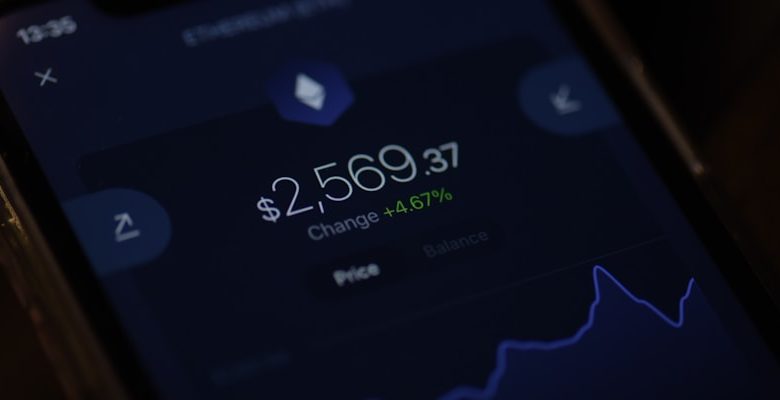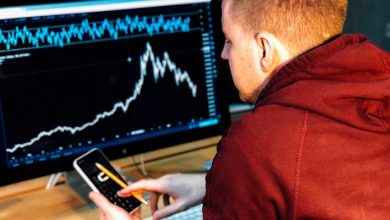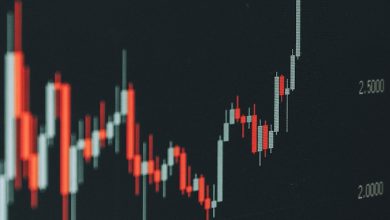How to Use Moving Averages in Crypto Trading

- Understanding Moving Averages in Crypto Trading
- Types of Moving Averages to Consider
- Setting Up Moving Averages on Your Trading Platform
- Using Moving Averages to Identify Trends in Cryptocurrency Markets
- Strategies for Trading with Moving Averages
- Common Mistakes to Avoid When Using Moving Averages in Crypto Trading
Understanding Moving Averages in Crypto Trading
When it comes to crypto trading, one of the most commonly used technical analysis tools is moving averages. Moving averages are used to smooth out price data and identify trends over a specific period of time. By understanding how to interpret moving averages, traders can make more informed decisions about when to buy or sell cryptocurrencies.
There are two main types of moving averages that traders use: the simple moving average (SMA) and the exponential moving average (EMA). The SMA gives equal weight to all data points in the period being analyzed, while the EMA gives more weight to recent data points. Traders often use a combination of both types of moving averages to get a more comprehensive view of the market.
When using moving averages in crypto trading, traders typically look for two main signals: the golden cross and the death cross. A golden cross occurs when a short-term moving average crosses above a long-term moving average, indicating a bullish trend. On the other hand, a death cross occurs when a short-term moving average crosses below a long-term moving average, signaling a bearish trend.
Types of Moving Averages to Consider
When using moving averages in crypto trading, it is important to consider different types that can provide valuable insights into market trends. Here are some of the most common types of moving averages to consider:
- Simple Moving Average (SMA): This type of moving average calculates the average price of an asset over a specific period. It is a straightforward method that can help smooth out price fluctuations and identify trends.
- Exponential Moving Average (EMA): The EMA gives more weight to recent prices, making it more responsive to current market conditions. This can be useful for traders looking to react quickly to changes in the market.
- Weighted Moving Average (WMA): WMA assigns different weights to each price point, giving more importance to recent data. This can provide a more accurate representation of current market trends.
- Smoothed Moving Average (SMMA): SMMA is similar to the SMA but places more emphasis on the most recent data points. This can help traders identify trends earlier and potentially make more informed trading decisions.
Each type of moving average has its own strengths and weaknesses, so it is important to experiment with different types to see which one works best for your trading strategy. By understanding the differences between these moving averages, you can make more informed decisions when trading cryptocurrencies.
Setting Up Moving Averages on Your Trading Platform
To set up moving averages on your trading platform, follow these steps:
– Log in to your trading account.
– Navigate to the indicators or studies section.
– Look for the moving averages option.
– Select the type of moving average you want to use (such as simple or exponential).
– Choose the time period for the moving average (e.g., 50 days).
– Adjust the settings to customize the moving average to your preferences.
– Apply the moving average to the chart of the cryptocurrency you are trading.
– Take note of how the moving average lines interact with the price action.
– Use this information to make informed trading decisions based on the moving average signals.
By setting up moving averages on your trading platform, you can gain valuable insights into the price trends of cryptocurrencies and improve your trading strategy.
Using Moving Averages to Identify Trends in Cryptocurrency Markets
Using moving averages in cryptocurrency trading can be a valuable tool for identifying trends in the market. By analyzing the average price of a cryptocurrency over a specific period, traders can gain insights into whether the price is trending upwards, downwards, or moving sideways. This information can help traders make more informed decisions about when to buy or sell a particular cryptocurrency.
There are two main types of moving averages that traders commonly use: the simple moving average (SMA) and the exponential moving average (EMA). The SMA calculates the average price of a cryptocurrency over a set number of periods, while the EMA gives more weight to recent prices. Both types of moving averages can be useful for identifying trends, but some traders prefer to use EMAs for their responsiveness to recent price movements.
When using moving averages to identify trends in cryptocurrency markets, traders typically look for two key signals: crossovers and price direction. A crossover occurs when a short-term moving average crosses above or below a long-term moving average, signaling a potential change in the trend. Traders also pay attention to the direction of the moving averages themselves – if the short-term moving average is above the long-term moving average, it may indicate an uptrend, while the opposite may signal a downtrend.
Strategies for Trading with Moving Averages
When trading with moving averages in the crypto market, there are several strategies that traders can utilize to make informed decisions. By incorporating moving averages into your trading analysis, you can gain valuable insights into market trends and potential price movements.
- One common strategy is to use a combination of short-term and long-term moving averages to identify entry and exit points. Traders often look for crossover points between these moving averages as signals to buy or sell.
- Another approach is to use moving averages to determine the overall trend of a particular cryptocurrency. By analyzing the direction and slope of the moving averages, traders can better understand whether the market is in an uptrend, downtrend, or range-bound.
- Additionally, some traders use moving averages as support and resistance levels. When a cryptocurrency’s price approaches a moving average, it may find support or resistance at that level, providing opportunities for traders to enter or exit positions.
It is important to note that while moving averages can be valuable tools in trading, they are not foolproof indicators and should be used in conjunction with other forms of analysis. By combining moving averages with technical indicators, chart patterns, and fundamental analysis, traders can make more informed decisions and improve their overall trading strategy in the dynamic crypto market.
Common Mistakes to Avoid When Using Moving Averages in Crypto Trading
When using moving averages in crypto trading, there are several common mistakes that traders should avoid to ensure more successful outcomes. These mistakes can often lead to inaccurate signals and poor decision-making, ultimately resulting in financial losses.
One common mistake is relying too heavily on a single moving average. It is important to use a combination of different moving averages to get a more comprehensive view of the market trends. Additionally, using moving averages with different time periods can provide a more accurate analysis of the market.
Another mistake to avoid is using moving averages in isolation. It is essential to consider other indicators and tools in conjunction with moving averages to confirm signals and make informed trading decisions. This can help reduce the risk of false signals and improve overall trading accuracy.
Furthermore, traders should be cautious of using moving averages during periods of high volatility. In such conditions, moving averages may not provide reliable signals due to erratic price movements. It is important to consider the market environment and adjust trading strategies accordingly.
Lastly, traders should avoid ignoring the importance of setting stop-loss orders when using moving averages. Stop-loss orders can help protect investments and minimize potential losses in case of unexpected market movements. It is crucial to incorporate risk management practices into trading strategies to ensure long-term success.



